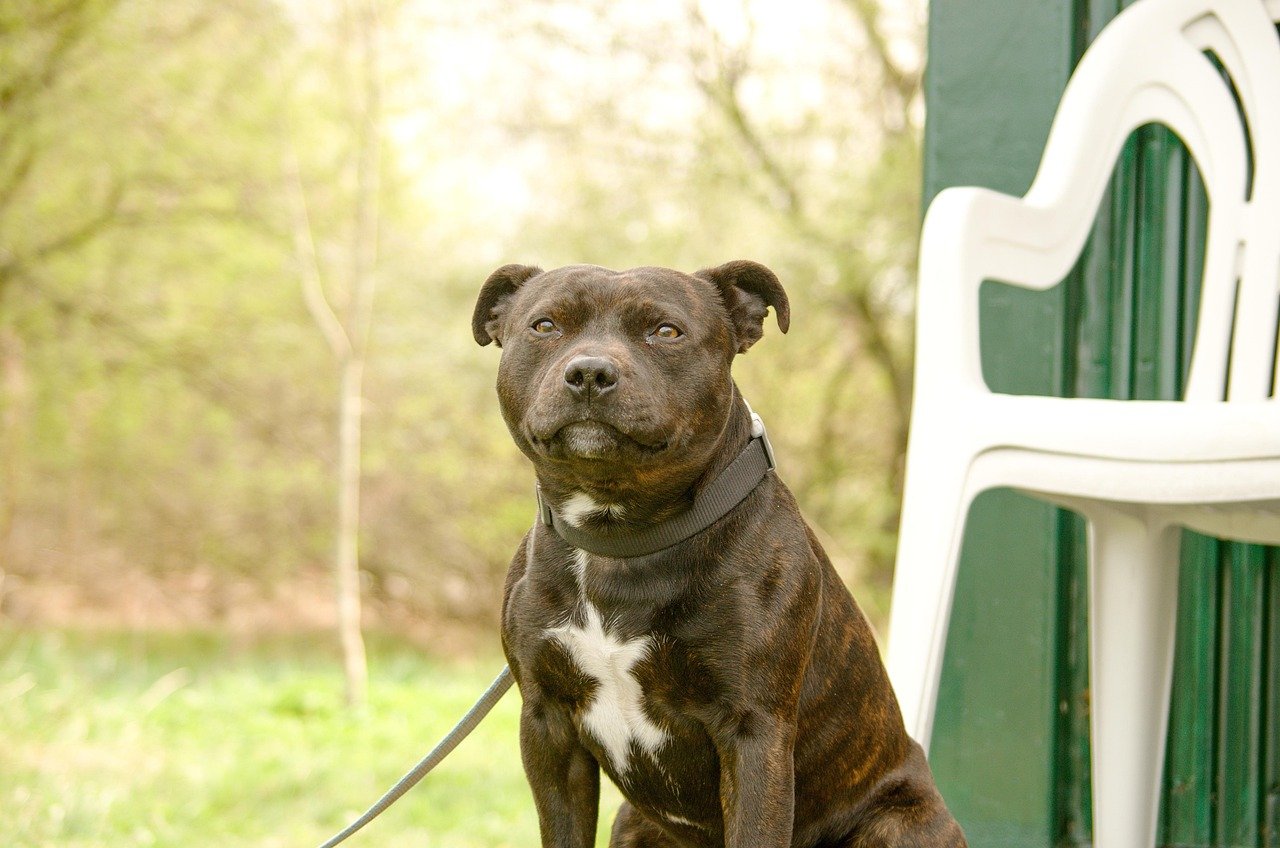Have you ever met a dog with a smile so big, it feels like a warm hug? That’s the magic of the Staffordshire Bull Terrier, a breed often wrapped in controversy yet adored in countless homes. But why are these sturdy, stocky dogs nicknamed “Nanny Dogs”? Is it just an old wives’ tale, or is there something truly special about their bond with children? The answer might surprise you and even tug at your heartstrings. Let’s dive deep into the history, personality, and real-life stories that have made the Staffy a beloved family guardian for generations—and why, despite changing times, they still deserve to be called “Nanny Dogs.”
The Origin of the “Nanny Dog” Nickname

The term “Nanny Dog” isn’t just a cute label—it’s rooted in the genuine history of the Staffordshire Bull Terrier. Decades ago, in working-class homes across England, Staffies were more than pets. They were protectors, playmates, and gentle companions for children. These dogs weren’t just left in the backyard; they lived side by side with families, sharing warmth and laughter. Their patience and watchful nature made them a trusted presence around kids, earning them the affectionate nickname. While some modern historians debate the accuracy of the term, countless family stories passed down through generations speak to the loving roles these dogs played. The “Nanny Dog” legend is more than myth; it’s a reflection of how much trust families placed in their Staffies.
Gentle Nature Behind a Tough Appearance

At first glance, a Staffordshire Bull Terrier can look intimidating. Their muscular build, broad head, and intense gaze might make a stranger hesitate. But underneath that tough exterior beats the heart of a gentle giant. Staffies are famously affectionate, often pressing their bodies close to their humans or climbing into laps—despite being a bit too large for it! Their need for cuddles and connection is legendary among owners. This gentle nature is why so many people are shocked after meeting a Staffy for the first time. They’re not fierce, aggressive animals; instead, they’ll greet you with a wagging tail and a hopeful look for belly rubs. Their loyalty and tenderness, especially towards children, set them apart from many other breeds.
Unshakeable Loyalty to Family
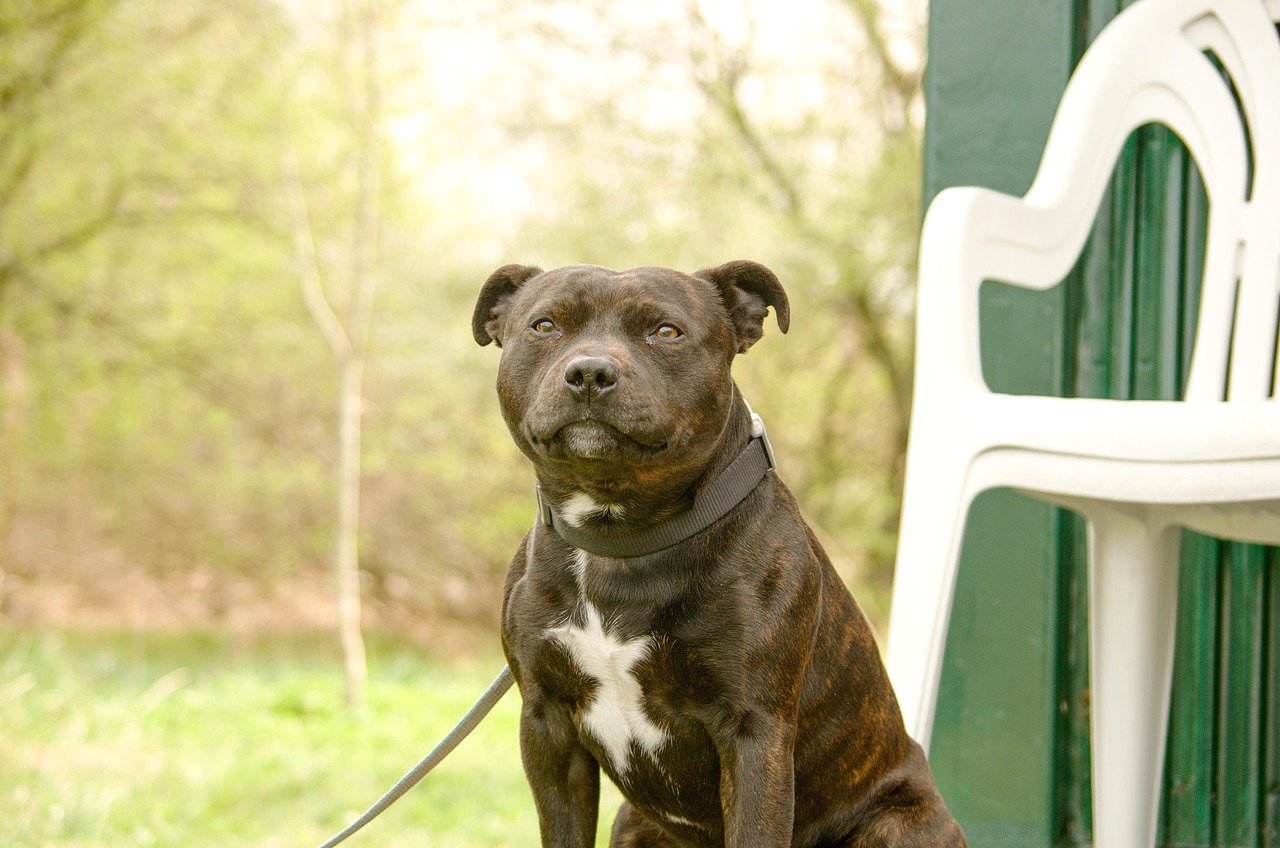
One of the most astonishing traits of Staffies is their fierce loyalty to their families. Once a Staffy forms a bond, it’s unbreakable. They thrive on being part of daily life, following their favorite humans from room to room, sometimes even nudging doors open just to be closer. This loyalty isn’t reserved for adults—it extends to children too. Many owners recount stories of their Staffy standing guard during naptime, staying close during playdates, or even acting as a furry shadow on family outings. This unwavering devotion is one of the biggest reasons Staffies have earned—and kept—the “Nanny Dog” title. Their fierce protectiveness is balanced perfectly with their loving hearts.
Patience With Children: Fact or Fiction?

Ask any longtime Staffy owner about their dog’s patience, and you’ll likely hear stories that sound almost too good to be true. From tolerating dress-up games to enduring endless cuddles and even the occasional playful tug, Staffies have a reputation for being remarkably tolerant with kids. It’s not uncommon to see a Staffy calmly lying while a toddler uses them as a pillow or climbing frame. While, of course, every dog is unique and supervision is always necessary, the breed’s forgiving nature shines through. For many families, this patience is what makes Staffies feel like a second pair of eyes and hands when it comes to child safety and companionship.
Protective Instincts Without Aggression

Staffordshire Bull Terriers are natural protectors, but not in the way you might expect. Unlike some breeds that react with aggression, Staffies rely on their strong presence and awareness to keep loved ones safe. They’re quick to notice when something isn’t right—a strange noise, an unfamiliar visitor, or a child’s cry. But instead of lashing out, they often position themselves between their family and the perceived threat, watching and waiting. Their protective instincts come from a place of care, not fear or hostility. This makes them ideal family dogs for those seeking both a loving companion and a gentle guardian.
Real-Life Stories of Staffies as Nanny Dogs

The stories from families who share their lives with Staffies are often both touching and hilarious. One family describes how their Staffy, Daisy, would sleep outside their baby’s door every night, refusing to leave her post even for treats. Another owner remembers their Staffy patiently letting three children dress her in silly hats and feather boas for hours. These anecdotes aren’t rare—they pop up in community forums and conversations with Staffy lovers everywhere. The overwhelming theme? These dogs seem to have a sixth sense for knowing when kids need comfort, fun, or just a furry friend by their side.
Staffies and Socialization: Shaping a Great Companion
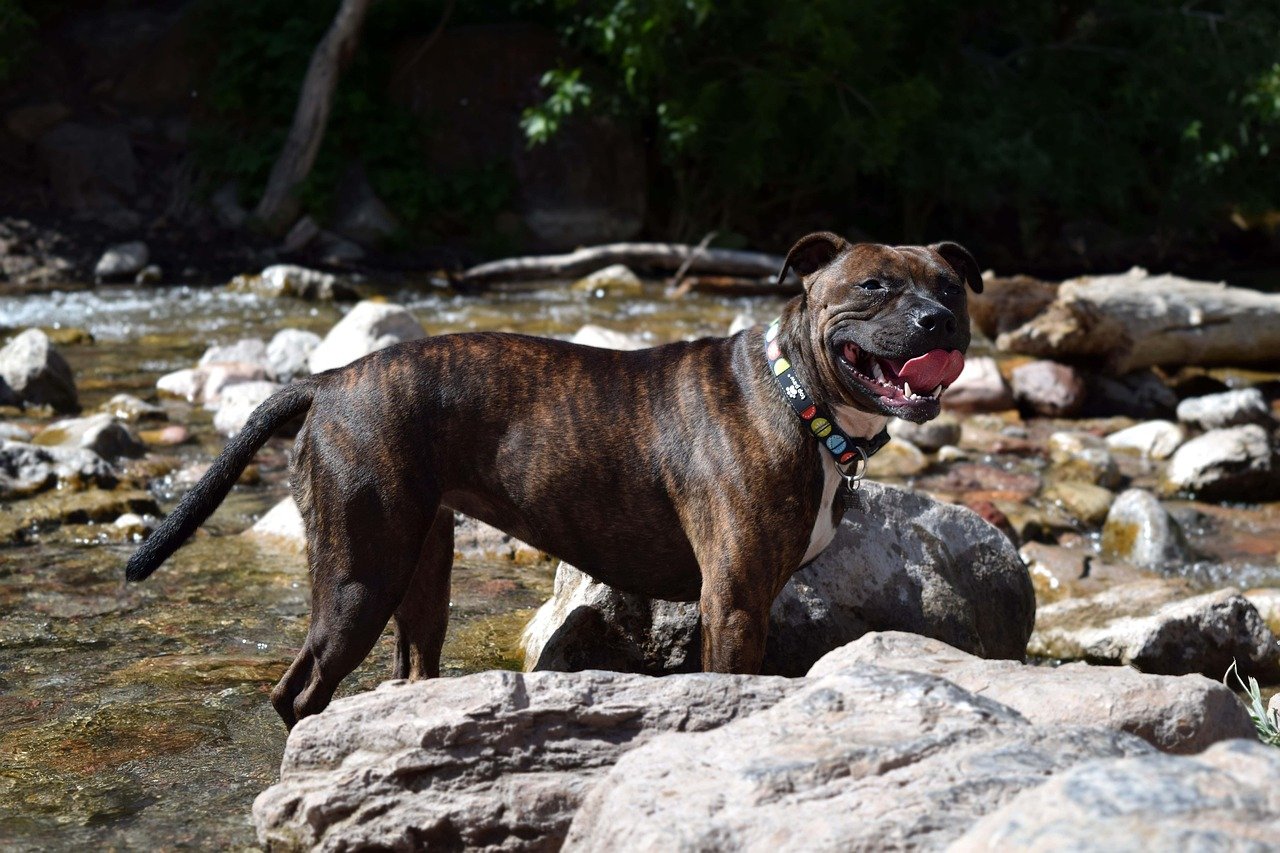
No dog is born perfect, and Staffies are no exception. Their wonderful temperament is partly the result of their upbringing. Early socialization is key for Staffies to develop into the calm, confident “Nanny Dogs” they’re known to be. Introducing them to children, other pets, and different environments helps shape their friendly and adaptable nature. Owners often find that, with the right start, Staffies are more than willing to welcome new people and situations. Training and positive reinforcement go a long way, turning their natural enthusiasm into polite, loving behavior. The old saying “it takes a village” applies here—Staffies thrive best when everyone in the family gets involved.
Misconceptions and Media Myths

Unfortunately, not everyone sees Staffies for the sweet, loyal dogs they are. Media stories sometimes paint them as dangerous or unpredictable, lumping them in with other “bully breeds.” These misconceptions can lead to fear, bias, and even breed bans in some places. It’s a heartbreaking reality for Staffy lovers who know the truth—that their dogs are gentle souls bursting with love. Breaking through these myths requires honest conversations, positive examples, and sharing real-life stories. Every time a Staffy wins over a skeptic, the “Nanny Dog” legend grows stronger, proving that reputation doesn’t always match reality.
Modern Families and the Staffy’s Role
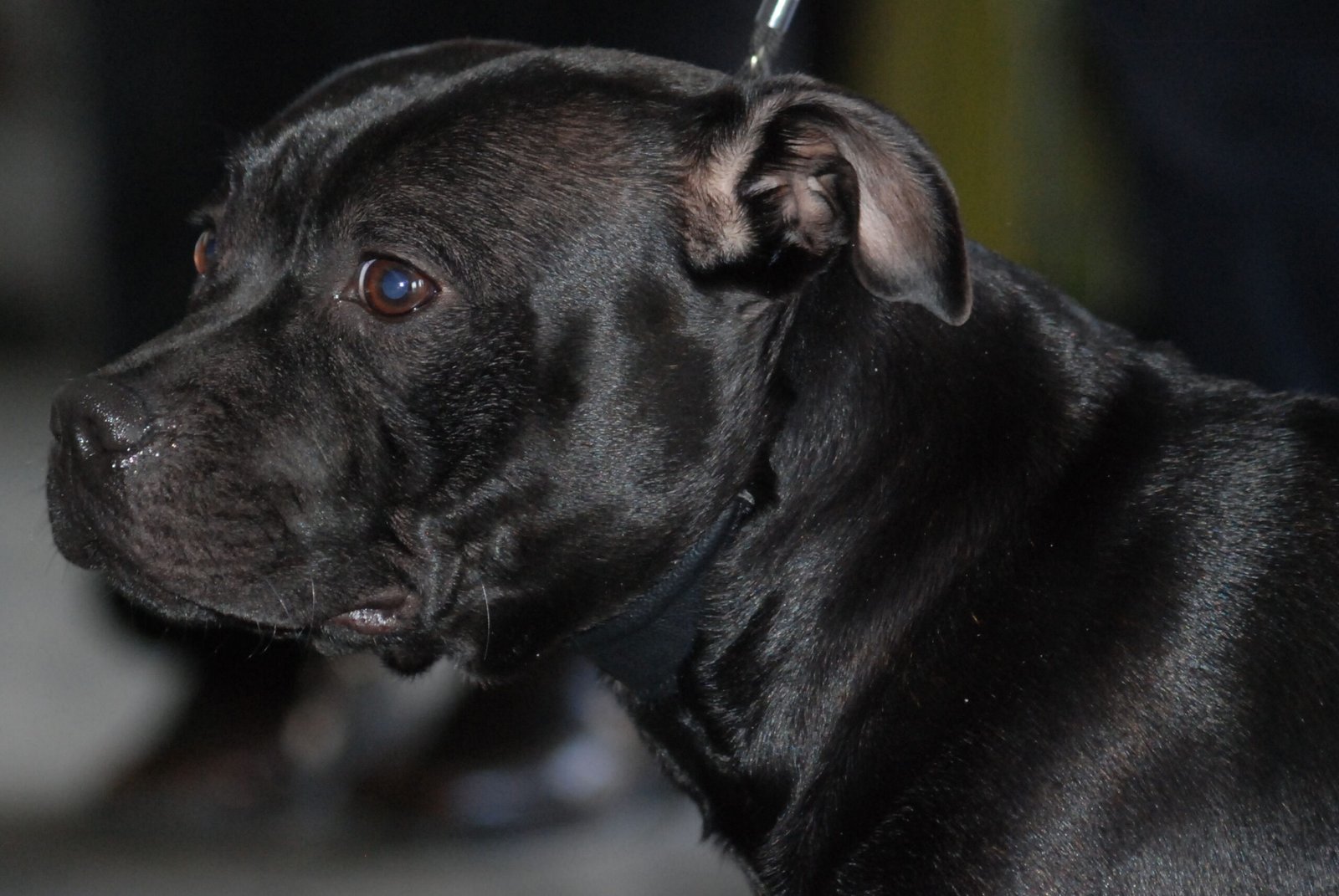
Today’s families look different than they did a century ago, but the Staffy’s place in the home remains remarkably consistent. Whether it’s a city apartment, a suburban house, or a countryside cottage, these dogs adapt quickly. They’re just as happy snuggling on the couch as they are exploring a backyard. For busy households with kids, Staffies can be both playful companions and calming presences. They teach children empathy, responsibility, and the joy of unconditional love. In an age of screens and distractions, the simple act of walking or playing with a Staffy brings families closer together and keeps old traditions alive.
Why the “Nanny Dog” Title Still Fits
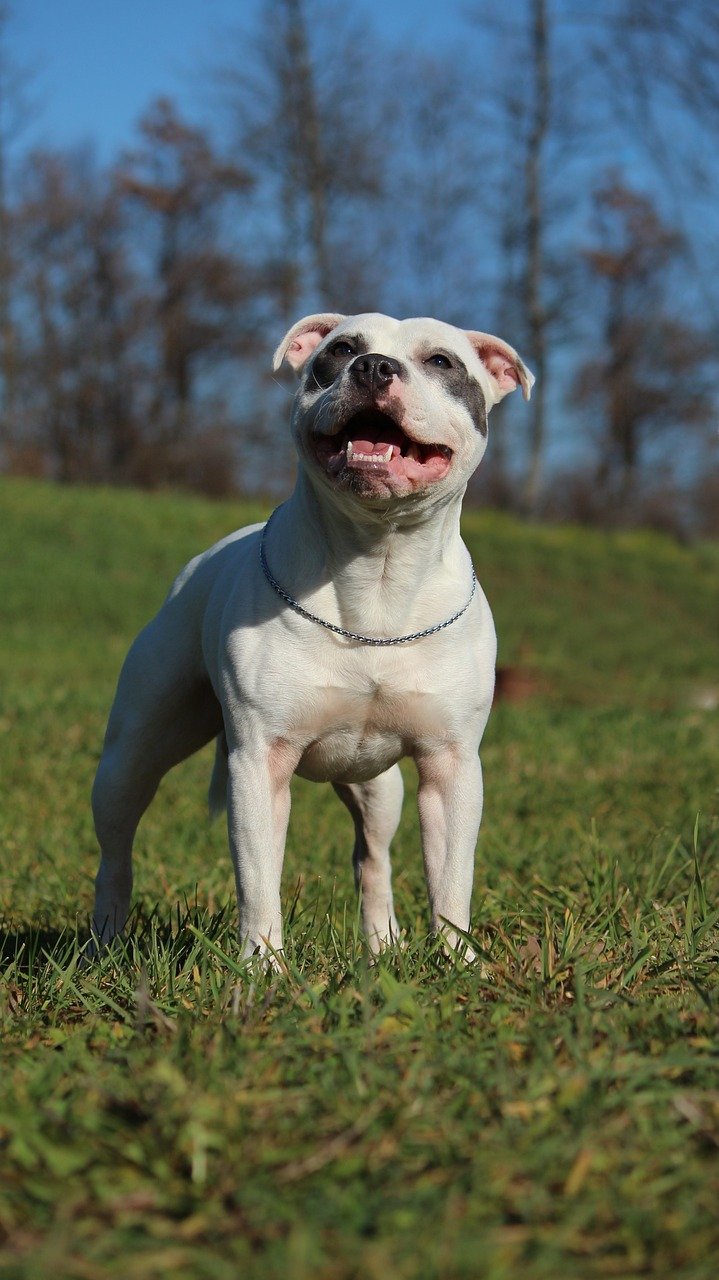
Despite changing trends in dog ownership and evolving family dynamics, the core qualities that earned Staffies the “Nanny Dog” nickname are still alive and well. Their gentle nature, unwavering loyalty, and protective spirit haven’t faded with time. The love they pour into their families is as strong today as it was in the crowded homes of Victorian England. For anyone who has ever watched a Staffy quietly watch over a sleeping child or patiently endure a child’s game, the title makes perfect sense. These dogs don’t just deserve the name—they embody it, every single day.

